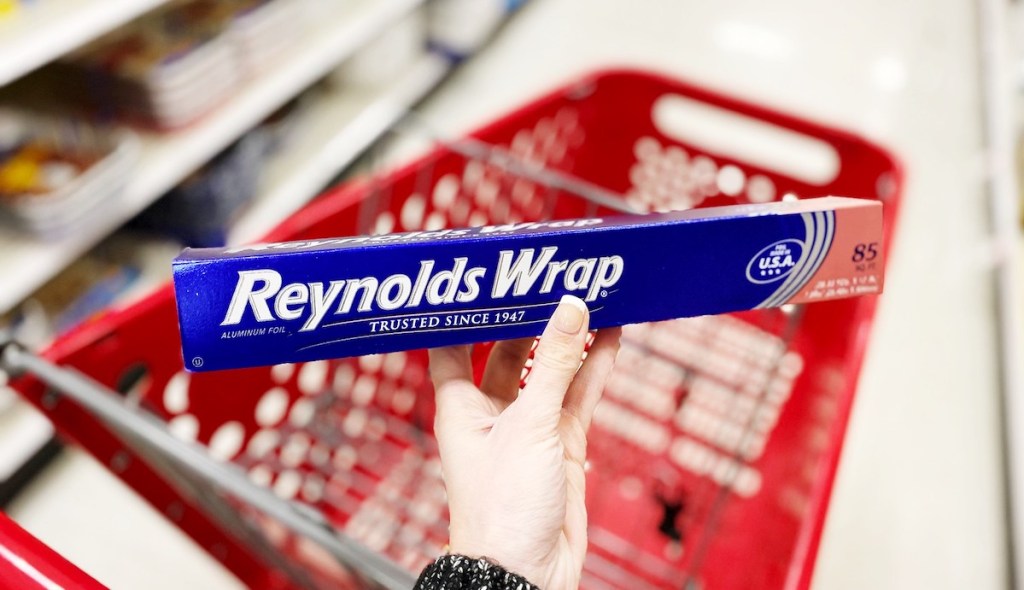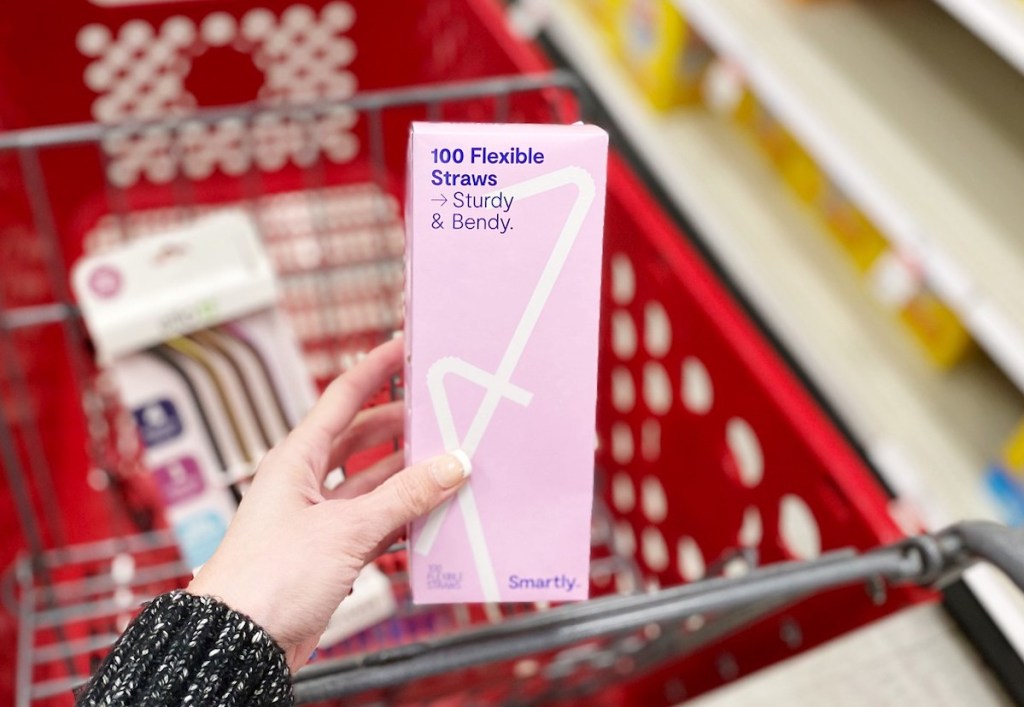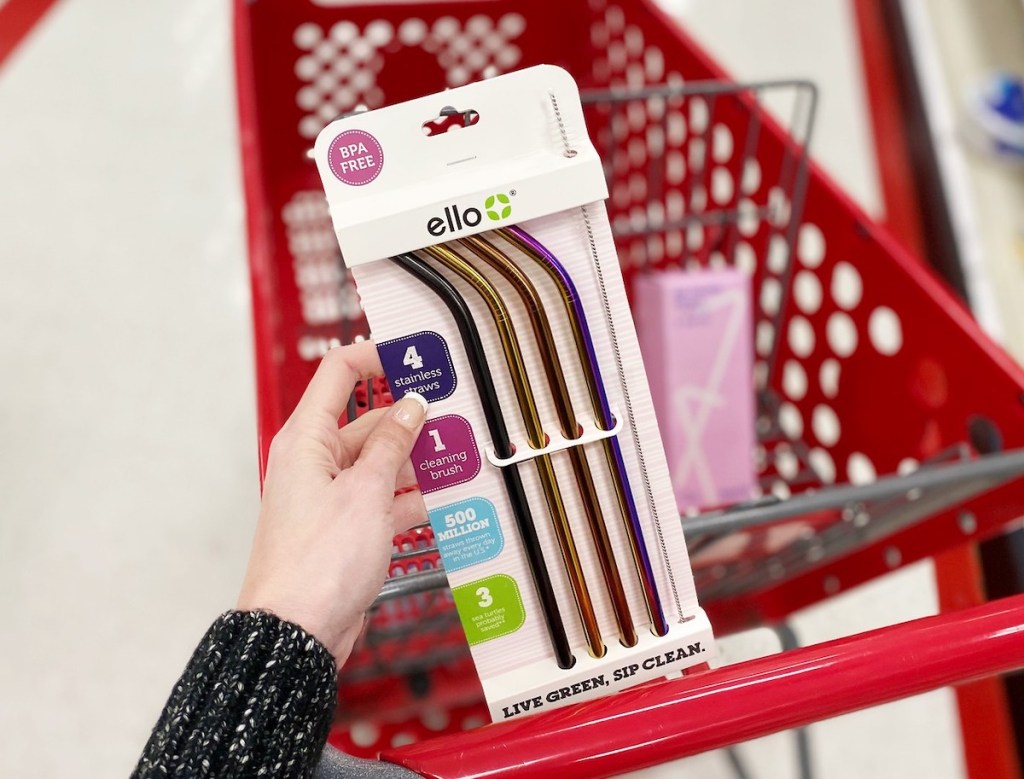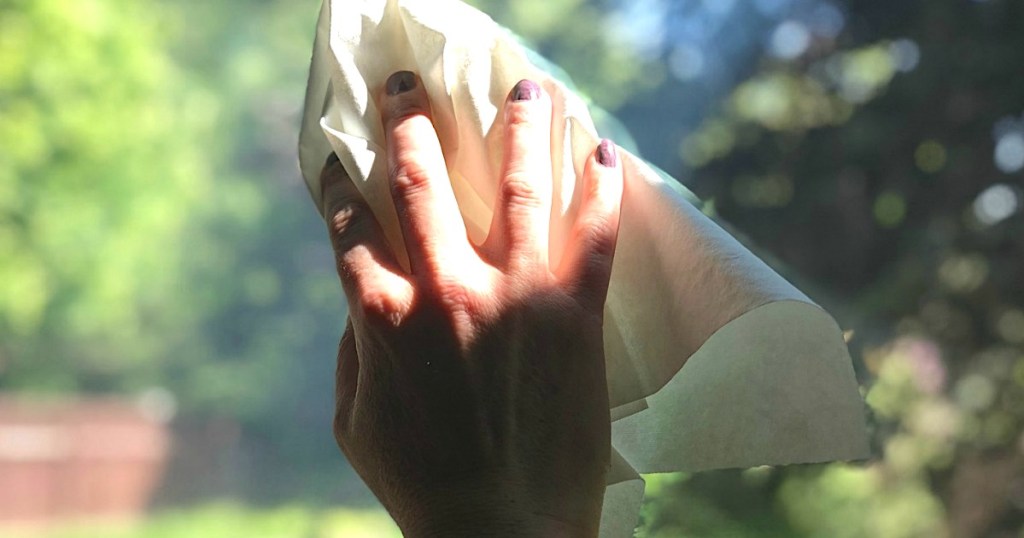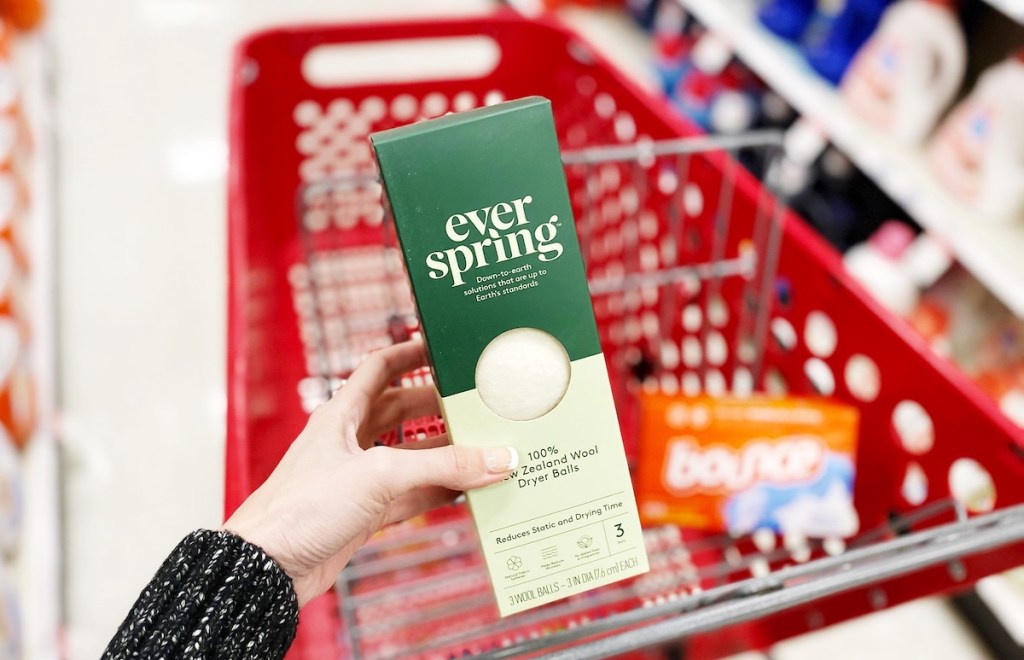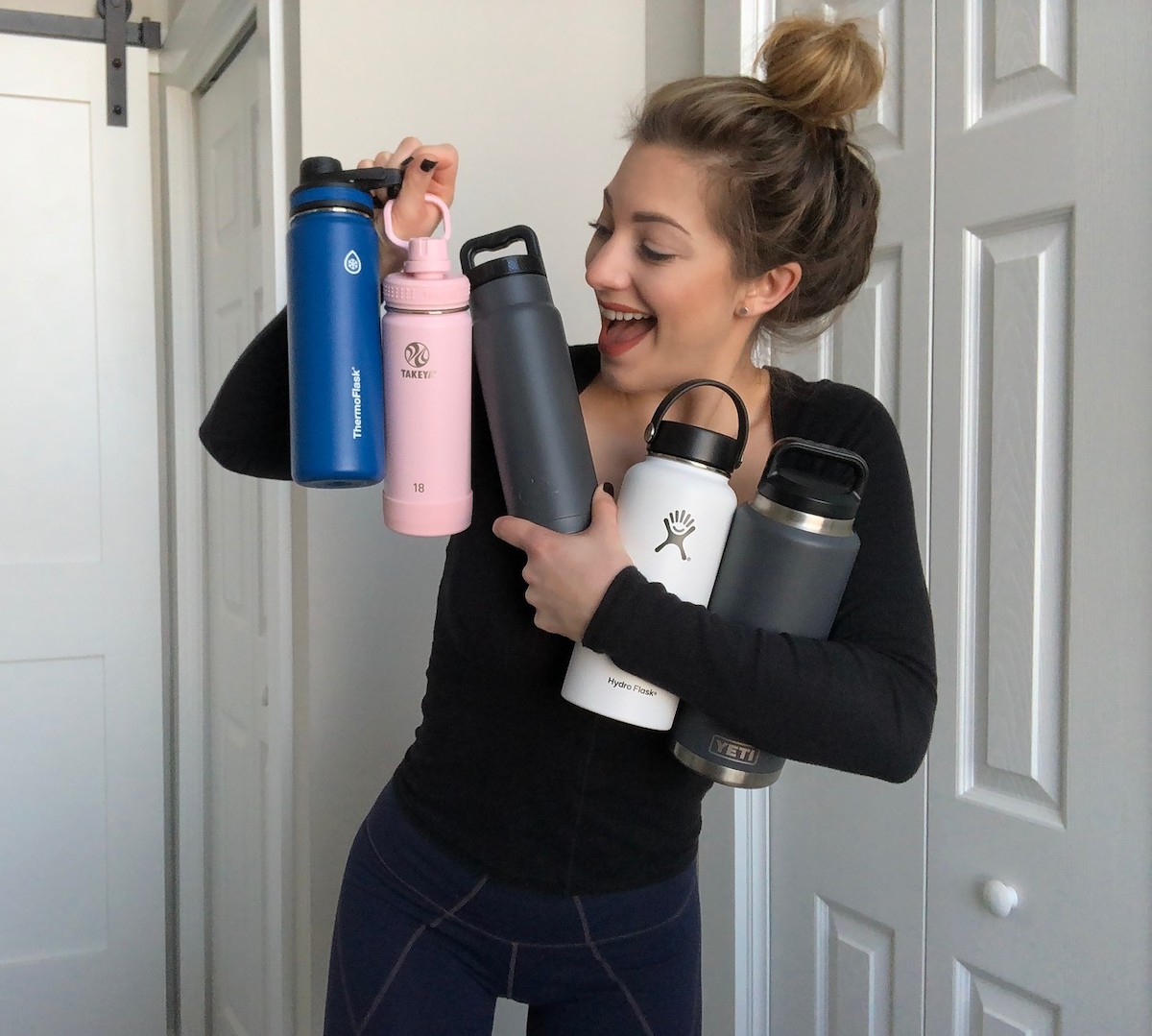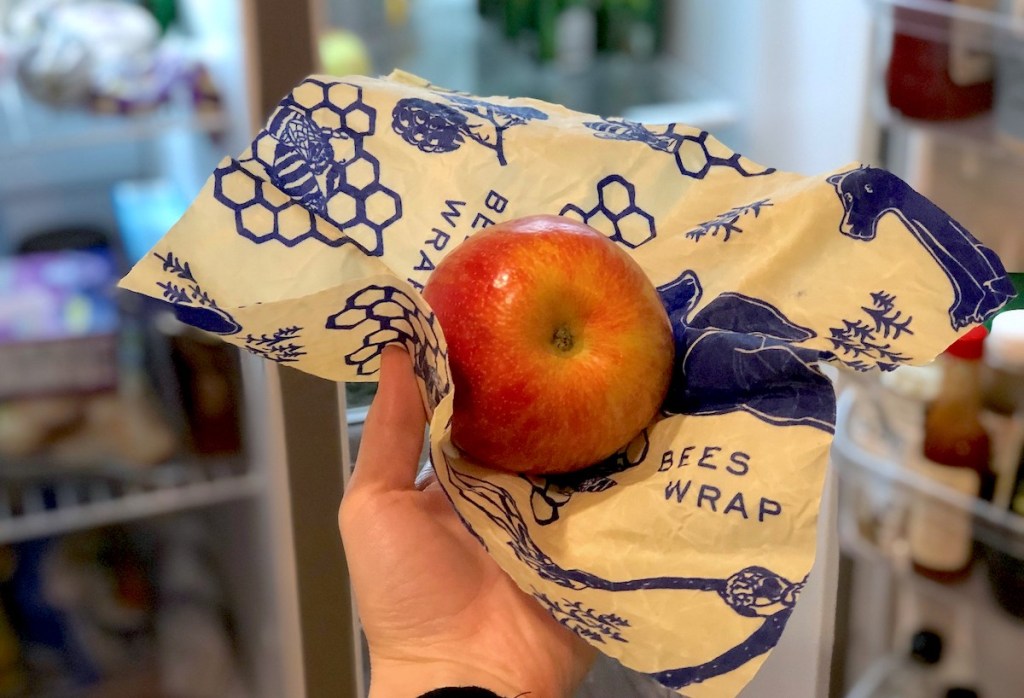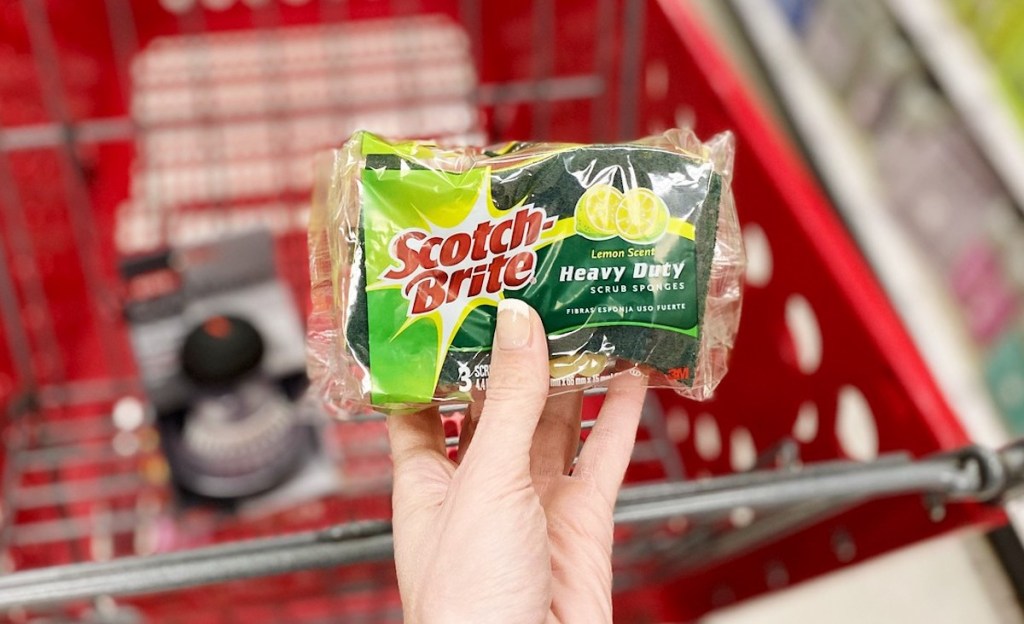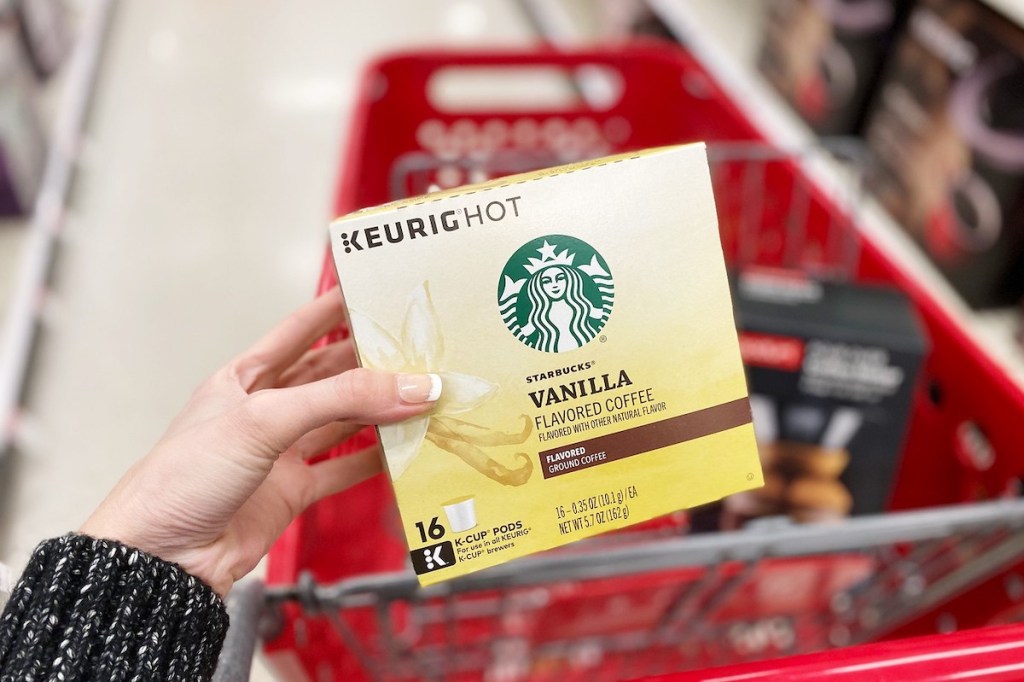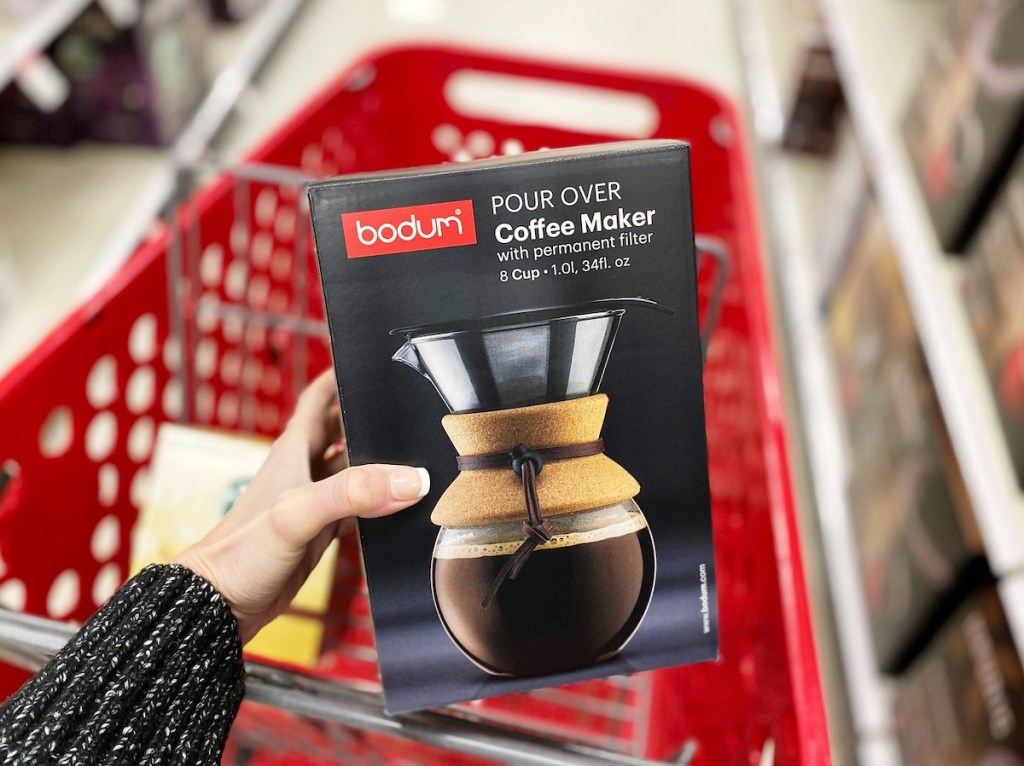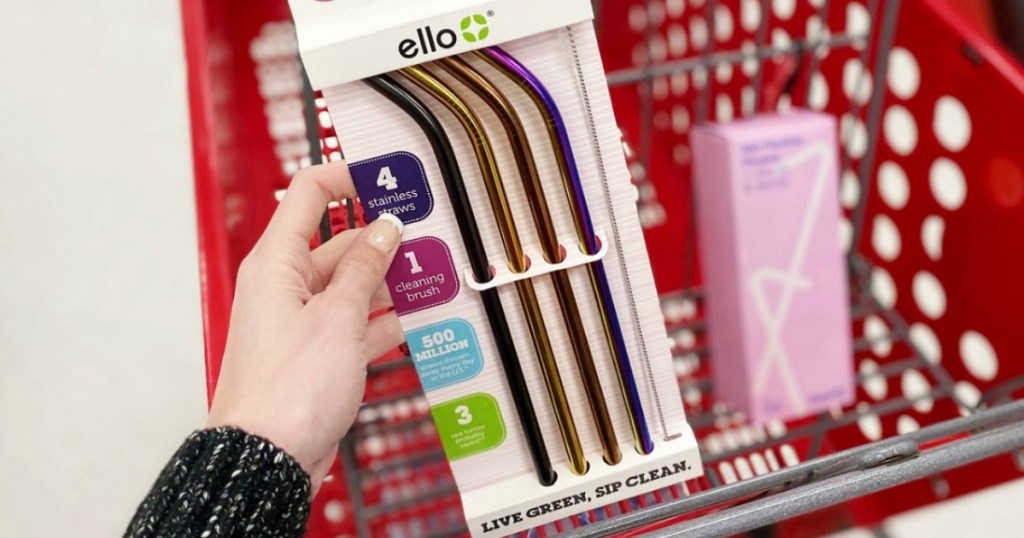
Buy smarter, help the planet, save more money.
While were constantly searching for the very best deals on everything, we think its time to employing ways to save money inside your home. By ditching these 10 household items, youll save money and the planet with these cost-effective and environmentally-friendly product swaps.
Here are 10 household items you should ditch:
1. Ditch aluminum foil and parchment paper in favor of silicone baking mats.
According to Curiosity, aluminum foil is even more wasteful than plastic wrap. Producing 1 ton of aluminum foil takes about 170 million BTUs to produce which is about as much as 1,400 gallons of gasoline. The process also emits about 12 tons of greenhouse gases and takes 400 years to break down after its discarded.
The average family is likely to use a standard size roll of Reynolds Wrap in about a month or less. And at close to $5 (or more for larger rolls) that means youre spending about $60 a year in tinfoil.
By switching to silicone baking mats, youll have a sanitary and simple way to cook all your meals. Plus, they can even be used for baking which will replace any parchment paper that you may currently be using.
If you get in the habit of using silicone baking mats, youll save 24,000 sq. ft. of foil and $600 over the next 10 years!
2. Swap plastic straws in favor of reusable straws.
While you may not go through very many plastic straws at home unless youre having a party or get together, plastic straws are so harmful to the environment. Did you know that a lot of huge companies are nixing plastic straws altogether, too?
Approximately 500 million straws are used each day in America alone. Its been calculatedthat by 2050 there will bemore weight in straws than fish in the oceans thats only 30 years away, friends. 
As an example, if you have a family of 5 that uses just 1 straw per week, thats 260 straws a year! By switching to metal straws, youll be saving a little bit of cash at your next party, but more importantly, youll be making a huge impact on our environment and helping save our oceans and marine life.
If you and your family get in the habit of using reusable straws, youll nix about 2,600 plastic straws over the next 10 years!
3. Stop wasting paper towels and use washable cloths.
This may be a big adjustment for many people, but paper towels are a huge culprit to waste in our country. According to Durafresh More than 13 billion pounds of paper towels are used each year in the USA, amounting to 40 pounds the equivalent of 80 rolls per person, per year.  And in order to produce all of that paper it requires a whopping 110 million trees and 130 billion gallons of water per year. GULP!
And in order to produce all of that paper it requires a whopping 110 million trees and 130 billion gallons of water per year. GULP!  Its a waste of money and waste of precious resources!
Its a waste of money and waste of precious resources!
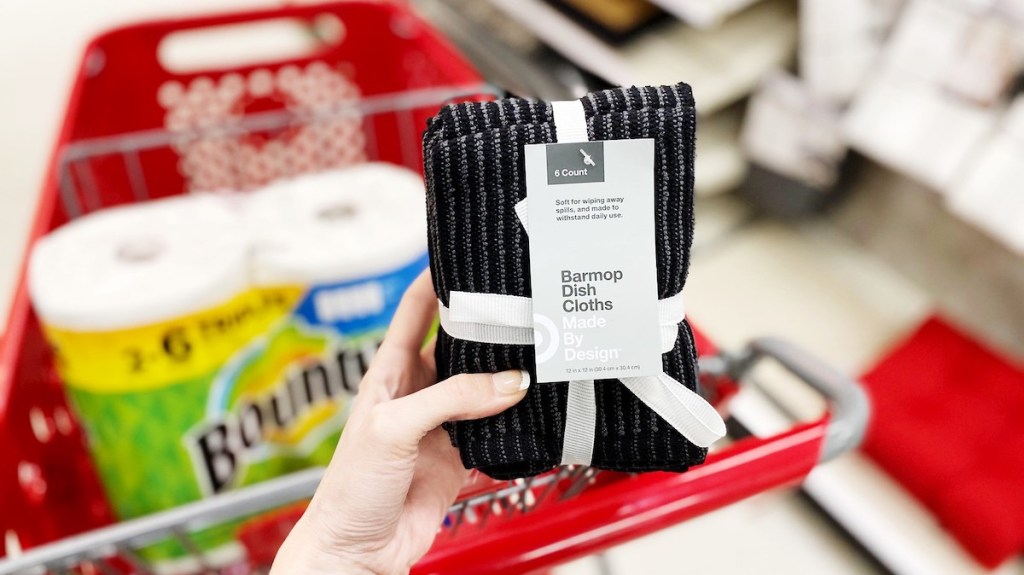
A 12 pack of Bounty paper towels will run you over $15 and if you have a family of four, statistics show that youll power through them in three weeks or less! 
Instead, of using paper towels every time you dry your hands or wipe a counter, use some kitchen washcloths to wipe your counters or a reusable kitchen towel for your hands. If youre using washcloths to wipe down your counters, they wont take up as much room in your laundry either.
There are also many other alternatives to paper towels, such as reusable and washable bamboo paper towels, Zap cloths, microfiber cloths, bar mops, and even some new cloth diaper inserts.
Even Collins mom is a huge fan of Zap Cloths!
About a year ago, a friend gave us a pack of Zap cloths to try and I am now forever hooked! Keep in mind that Im a sloppy window cleaner. My cleaning typically ends up with so many streaks, the window looks worse than when I started. If my hubby sees me cleaning, he immediately grabs the cleaner out of my hand and he finishes the job. Well, no longer!
It is impossible to screw up with the Zap cloth and amazingly easy to use. Simply wet in water, wring out a bit, and wipe the window. I am constantly in awe of how it works. I gave my daughters sample packs to try, and they are equally impressed.
If you and your family get in the habit of using an environmentally-friendly alternative to paper towels, youll save 3,200 rolls or about $4,048 over the next 10 years!
4. Skip drying sheets and toss in a wool ball.
Most dryer sheets arent safe for you, but even if youre buying the all-natural ones, theyre still incredibly wasteful and most users tend to pop more than just one sheet in the dryer for good measure.  Yes, Im guilty of doing it too.
Yes, Im guilty of doing it too.
As EMG states, dryer sheets are full of chemicals that can harm your health, damage the environment and pollute the air, both inside and outside your home.
As an example, if youre using 2 dryer sheets for 5 loads of laundry a week, youre using an entire box of Bounce dryer sheets in just 10.5 weeks, which means youre spending about $30 every year and adding to our countrys toxic waste problem.
The Everspring brand available at Target offers really affordable dryer balls at just under $10 for a 3-pack which will last upwards of 1,000 laundry loads or until they fall apart. Not only that, but dryer balls also helps decrease your drying time, theyre biodegradable, dye-free, non-toxic, and dont contain any harmful fragrances. You can also opt to use nothing at all and save your cash.
If you get in the habit of using dryer balls, youll save 5,250 dryer sheets or about $300 over the next 10 years!
Hip Tip:We shared all the pros and cons of dryer balls vs. dryer sheets, plus we even shared our top recommendations and where to buy them!
5. Switch out plastic water bottles for a refillable one instead.
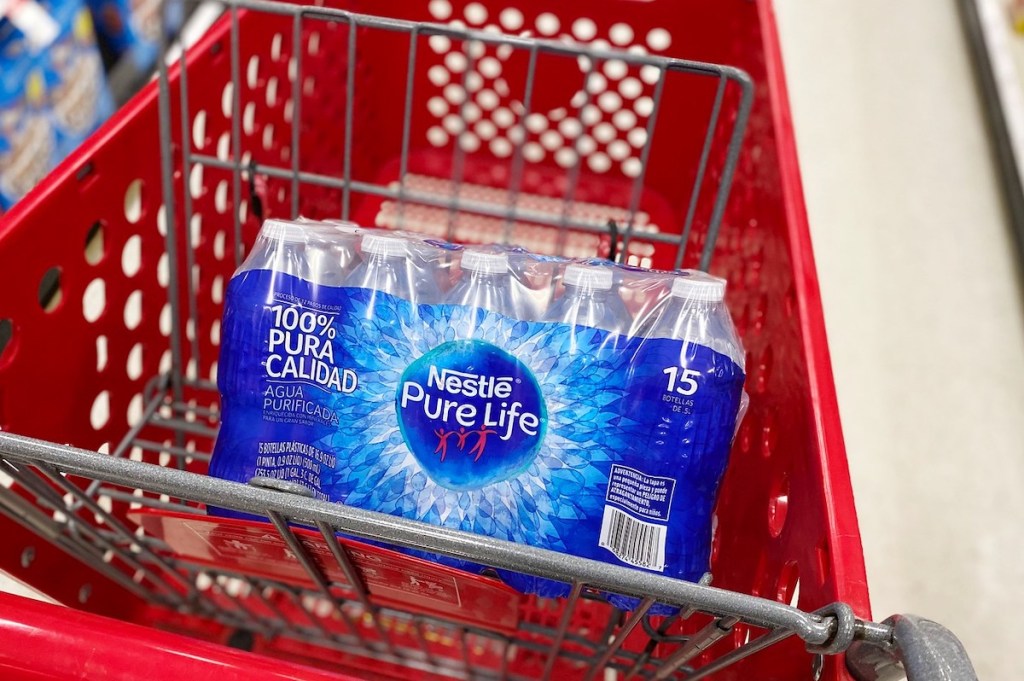
Dont stop drinking water, stop drinking it out of plastic. It goes without saying that bottled water is extremely wasteful. More often than not, people throw out every plastic bottle they drink once the first round of water is gone.
In fact, bottled water is ranked the #1 U.S. beverage by volume sold and according to the Container Recycling Institute, more than 60 million plastic bottles end up in landfills and incinerators every day a total of about 22 billion last year. 
While water consumption continues to grow every year (way to go us! 
 ), the average family currently spends about $100 per person each year on bottled water. Thats about 540 bottles per person or 2,160 bottles for a family of 4 per year down the drain literally. By investing in a great water bottle that you can reuse every day youre not just saving money, but helping mother nature, too.
), the average family currently spends about $100 per person each year on bottled water. Thats about 540 bottles per person or 2,160 bottles for a family of 4 per year down the drain literally. By investing in a great water bottle that you can reuse every day youre not just saving money, but helping mother nature, too.
If you and your family get in the habit of using reusable bottles, youll save 21,600 bottles of water or $4,000 over the next 10 years!
6. Say bye to plastic baggies for reusable wraps.

The number of plastic sandwich baggies I was wasting occurred to me when all 3 of my kiddos started school this year. Every day, I was using at least 3 baggies per lunch!  Thats 45 sandwich bags in just one week never mind the random bags I was using for other things when it was convenient.
Thats 45 sandwich bags in just one week never mind the random bags I was using for other things when it was convenient.
Thats about 4 boxes of these Ziploc sandwich bags per month! If I stayed on that track, I was projected to spend about $172.32 or more just on baggies that had a lifespan of less than 24 hours.  Talk about a waste!
Talk about a waste!
I recently made the switch to these wraps I found on Amazon and theyve been working out so wonderful! Plus, they can even be used to store leftovers at home. My kids say their food stays intact and its easy to ball up and put back into their lunch boxes. 
Bees Wrap is naturally antimicrobial and can be reused for up to an entire year! Its made from GOTS-certified organic cotton, sustainably sourced beeswax, organic jojoba oil, and tree resin. All of the ingredients combined create a malleable and easy-to-use food wrap that can be used over and over again!
Trader Joes also sells entire rolls of beeswax wraps for just a few bucks and while Ive never tried theirs, I know theyll be another great practical choice.
Amazon has a huge selection of reusable storage bags, too!
If you and your family get in the habit of using reusable wraps, youll save 21,600 plastic sandwich bags and $1,723 over the next 10 years!
7. Split with your kitchen sponge and replace with a brush.
Did you know that the sponge is considered the germiest item in your kitchen according to the NYU School of Medicine? And youre more likely to get food poisoning from an unsanitary sponge in your home than in a restaurant. 
Its recommended to replace your sponge every 2-3 weeks. If youre replacing your sponges every 2.5 weeks (on average) and buying a 3-pack of these sponges, youre spending approximately $27 every year.
By using a brush in the kitchen, youre not only saving on disposable sponges, but youll even cut down on dish soap when you go for a model with an efficient soap dispenser. Plus, brushes are dishwasher safe, so when its time to sanitize, you just pop it in the dishwasher and reuse it again!
If you get in the habit of using a dish brush, youll save 208 sponges and $276 over the next 10 years!
Hip Tip:Here are 9 other items in your home that should be replaced more often than you think.
8. Switch out the plastic wrap for silicone stretch lids.
According to Superbee.com, the average family goes through close to 24 rolls of plastic wrap per year! Thats about $100 per year just for plastic wrap!
Nows the time to stop throwing your money away, literally! Silicone stretch lids are perfect for storing leftovers, covering odd-shaped bowls or ones that dont have lids, and for covering fruits and veggies after theyve been cut in half.
The best part? Theyre conveniently dishwasher safe, BPA free, non-toxic, theyll keep your food fresher for longer, and they reduce your household waste (obviously  ). Plus, they can be used over and over again!
). Plus, they can be used over and over again!
If you get in the habit of using silicone stretch lids, youll be saving about 60,000 sq. ft. of plastic wrap or $1,000 over the next 10 years!
9. Ditch Keurig K-Cups for reusable cups or opt for a pour over coffee maker instead.
K-cups were a huge convenient invention when they first came out, but with their growing popularity, theyre contributing to a huge amount of plastic waste. In fact, the number of K-Cups that have been trashed in landfills could wrap around the planet 10 times!
If you and your spouse are brewing a cup of coffee with the Keurig every day, thats 728 K-cups a year or about 45 of these boxes of Starbucks K-cupspriced at $11.99 each. Psstthats $539.55 a year and a huge waste of money. 
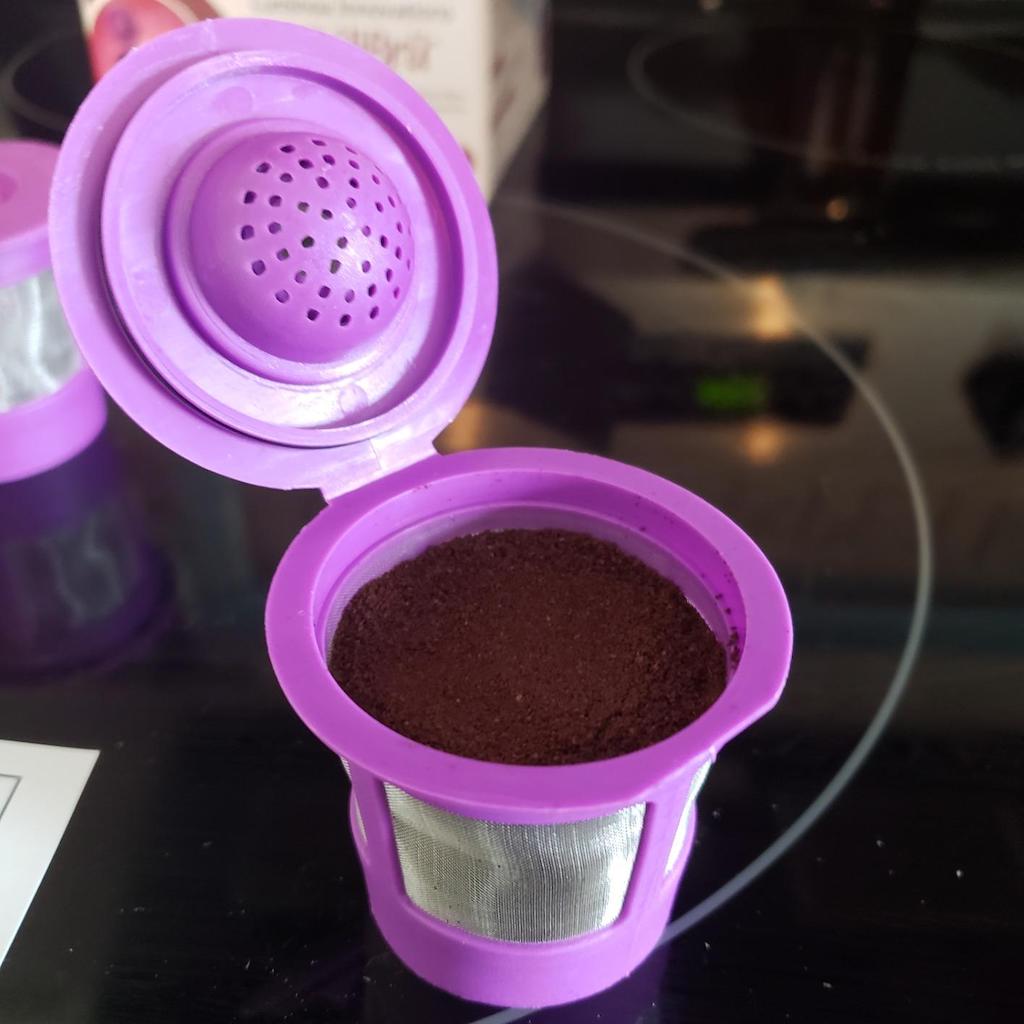
Instead, if you love the convenience of your Keurig, opt for reusable k cups pods! There are so many options available on Amazon. These will help keep more money in your pocket, create less waste, and allow you to brew your favorite ground coffee blends.
If youre interested in ditching the K-cups altogether, you may really love this pour over brewing method as a frugal alternative. Its actually my Hip teammate Emilys favorite way to brew coffee for the perfect cup every morning! Check out this pour over brewer at Target which comeswith a stainless steel filter so you wont even be wasting paper filters to brew your steamy cup of coffee. 
If you and your other half get in the habit of using a pour over, youll save at least 7,280 K-cups or $5,395 over the next 10 years!
10. Stay away from new retail and buy secondhand clothing.

According to Forbes, more than 150 billion garments are produced annually, enough to provide 20 new garments to every person on the planet, every year.  And Americans throw away about 70 lbs of clothing per person every year.
And Americans throw away about 70 lbs of clothing per person every year.
Not only that but its ranked the 2nd biggest polluter of freshwater resources on the planet and accounts for 85% of the human-made material found along ocean shores which are threatening marine wildlife and ending up in our food supply.
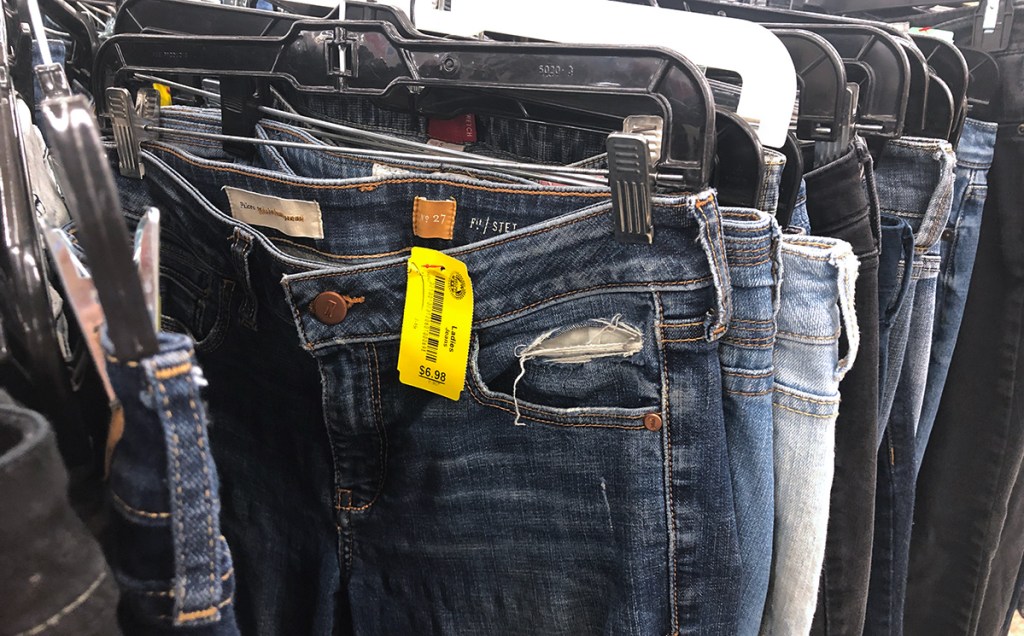
According to Credit Donkey, the average family spends $1,800 per year on [new] clothing with $388 of this on shoes. Women spend (on average) between $150-$400 per month on clothing and are estimated to spend around $125,000 on clothes in her entire lifetime. 
If you and your family get in the habit of buying secondhand clothes, youll be projected to save $18,000 on new clothes over the next 10 years!
Bonus tip: Bring a reusable bag instead of picking up plastic at the store.
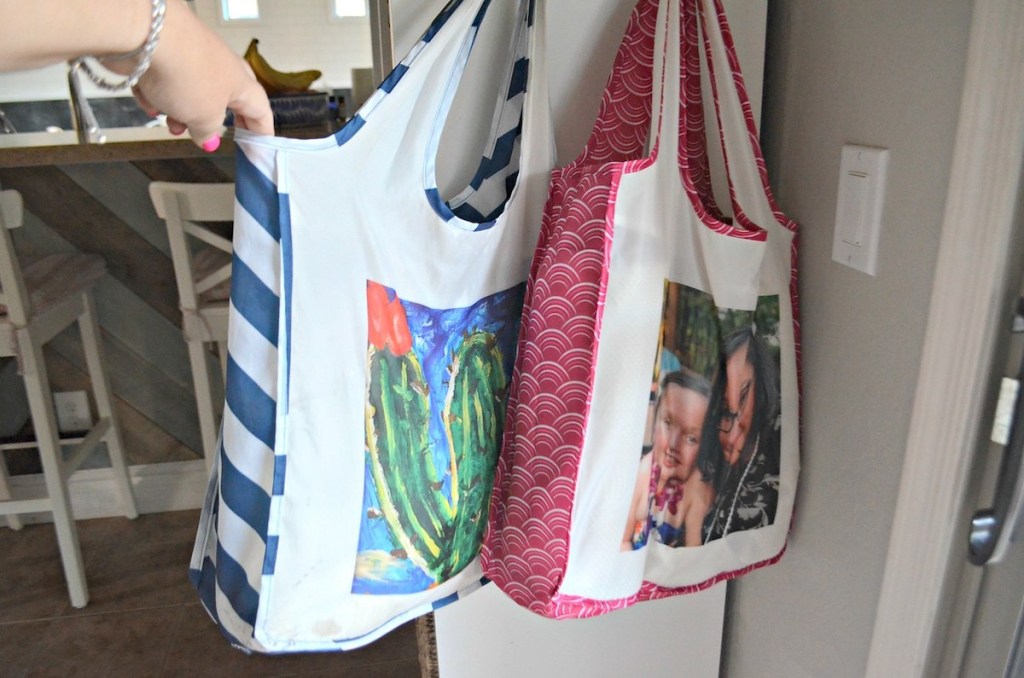
Remember, when youre shopping to bring along some reusable bags. Plastic bags are a huge contributing factor to our waste and if I cant convince you to make the switch, maybe these scary facts from PADI will
-
- Every second, 160,000 plastic bags are used around the world thats 1 TRILLION bags a year!
- The amount of petroleum it takes to produce 1 plastic bag could drive a car 36 feet.
- A plastic bag is used for an average of just 12 minutes.
- Less than 3% of plastic bags are recycled worldwide.
- Plastic bags are among the 12 items of debris most found in coastal clean-ups and have affected 267 different species of animals.
- If we joined all the plastic bags in the world together, they would circumnavigate the globe 4,200 times!!!
If just one person used reusable bags over their lifetime, they would be removing about 22,000 plastic bags from the environment!
In summary
If we make these environmentally-friendly changes together over the next 10 years, we can potentially save:
-
- $600 on aluminum foil
- $4,048 on paper towels
- $300 on dryer sheets
- $4,000 on plastic water bottles
- $1,723 on plastic sandwich bags
- $276 on sponges
- $1,000 on plastic wrap
- $5,395 on k-cups
- And a whopping $18,000 on new clothes
Thats an incredible sum of $35,342!!!
*Note that everyones family is different in size and these are just estimates based on our research and what the average person uses/buys for each of these products. The outcome or sum of savings can vary greatly and will depend on the cost of what youre replacing theseyhousehold items with.

